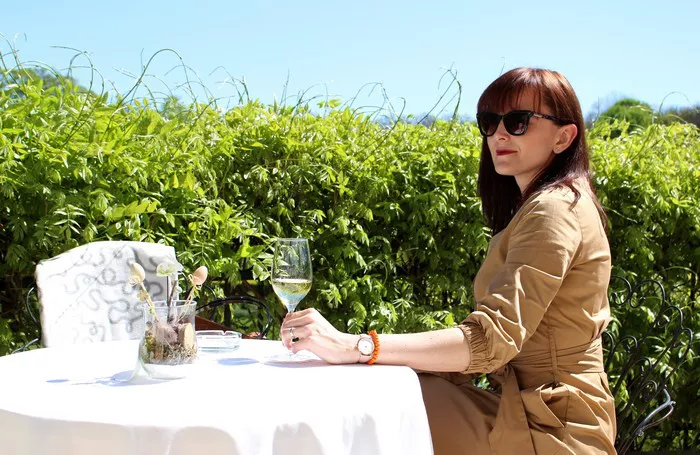When it comes to indulging in the effervescence of sparkling wine, connoisseurs and enthusiasts alike often ponder over a critical question: What temperature should sparkling wine be served at? The answer to this inquiry is not merely a matter of preference but rather a nuanced understanding of how temperature influences the sensory experience of this beloved beverage.
Understanding the Basics of Sparkling Wine
Before delving into the ideal serving temperature, it’s essential to grasp the fundamentals of sparkling wine. Unlike still wines, sparkling wines undergo a secondary fermentation process, which infuses them with bubbles of carbon dioxide, resulting in that delightful effervescence. This unique characteristic of sparkling wine introduces complexities that necessitate careful consideration when determining the optimal serving temperature.
The Importance of Temperature in Wine Appreciation
Temperature plays a pivotal role in unlocking the full spectrum of flavors and aromas in any wine, and sparkling wine is no exception. The right temperature can accentuate the wine’s characteristics, while serving it too warm or too cold can diminish its complexities, leaving it flat and unremarkable. Thus, achieving the perfect temperature is paramount to fully appreciating the nuances of sparkling wine.
Chilling Out: The Ideal Serving Temperature
So, what temperature should sparkling wine be served at? The consensus among experts is that most sparkling wines are best enjoyed when served chilled, but the precise temperature can vary depending on the style of the wine.
For most non-vintage sparkling wines, including popular varieties like Prosecco and Cava, a serving temperature of around 40 to 45 degrees Fahrenheit (4 to 7 degrees Celsius) is recommended. This temperature range allows the bubbles to remain lively without overpowering the delicate flavors of the wine.
Vintage sparkling wines, on the other hand, often benefit from slightly warmer serving temperatures. Aim for around 45 to 50 degrees Fahrenheit (7 to 10 degrees Celsius) to allow the wine’s complex aromas and flavors to fully develop while still maintaining the refreshing effervescence that makes sparkling wine so enjoyable.
The Science Behind Serving Temperatures
To truly appreciate the impact of temperature on sparkling wine, it’s essential to understand the science behind it. Cold temperatures help to preserve the wine’s bubbles, preventing them from dissipating too quickly upon pouring. Additionally, chilling the wine can enhance its acidity, lending a refreshing crispness to the palate.
Conversely, serving sparkling wine too cold can numb the taste buds, making it difficult to discern the wine’s nuances. At excessively low temperatures, the aromas and flavors become muted, robbing the wine of its complexity and character.
The Role of Glassware
In addition to temperature, the choice of glassware can also influence the enjoyment of sparkling wine. Opt for a flute or tulip-shaped glass, which helps to concentrate the wine’s aromas and allows the bubbles to rise gracefully to the surface, enhancing the visual appeal of the wine.
Avoid wide-rimmed glasses, such as those used for still wines, as they can cause the bubbles to dissipate quickly and diminish the overall effervescence of the wine. The right glassware can complement the serving temperature, elevating the sensory experience of sparkling wine.
See Also: Exploring Substitutes for White Port Wine: A Comprehensive Guide
Achieving the Perfect Chill
Now that we understand the importance of temperature in serving sparkling wine, let’s explore some practical tips for achieving the perfect chill. Begin by storing the wine in a cool, dark place away from direct sunlight and heat sources. Avoid storing sparkling wine in the refrigerator door, as it experiences more temperature fluctuations than the interior of the fridge.
When it’s time to chill the wine, place it in the refrigerator for at least two to three hours before serving. For a quicker chill, consider using an ice bucket filled with a combination of ice and water. Allow the wine to chill for around 30 minutes, rotating the bottle occasionally to ensure even cooling.
Adapting to Different Styles
It’s worth noting that the ideal serving temperature can vary depending on the style of sparkling wine. For example, Blanc de Blancs, made exclusively from Chardonnay grapes, may benefit from slightly warmer temperatures to allow their creamy textures and citrus notes to shine. On the other hand, Blanc de Noirs, crafted from red grape varieties such as Pinot Noir and Pinot Meunier, may fare better when served slightly cooler to highlight their red fruit flavors and crisp acidity.
Special Considerations for Champagne
Champagne, the epitome of luxury in the world of sparkling wine, deserves special attention when it comes to serving temperature. Traditionally, Champagne is served slightly cooler than other sparkling wines, with a recommended temperature range of 45 to 48 degrees Fahrenheit (7 to 9 degrees Celsius).
However, some Champagne enthusiasts advocate for serving it even colder, at around 42 degrees Fahrenheit (6 degrees Celsius), to preserve its effervescence and maintain its signature crispness. Ultimately, the ideal serving temperature for Champagne may vary depending on personal preference and the specific cuvée being enjoyed.
Navigating Seasonal Variations
As with any wine, seasonal variations can influence the ideal serving temperature of sparkling wine. During the warmer months, when temperatures rise, serving sparkling wine slightly cooler can be refreshing and invigorating, providing a welcome respite from the heat. Conversely, in colder climates or during the winter months, serving sparkling wine at a slightly warmer temperature can enhance its aromatics and make it more enjoyable to sip and savor.
Experimentation and Personal Preference
While guidelines for serving temperatures can provide valuable insights, it’s essential to remember that personal preference ultimately reigns supreme. Experiment with different serving temperatures to discover what works best for your palate and enhances your enjoyment of sparkling wine.
Whether you prefer your bubbly ice-cold and refreshing or slightly warmer and more aromatic, the key is to find the temperature that brings out the best in the wine and elevates your tasting experience. So, the next time you reach for a bottle of sparkling wine, consider the temperature at which it’s served and how it can enhance your enjoyment of this beloved beverage.


